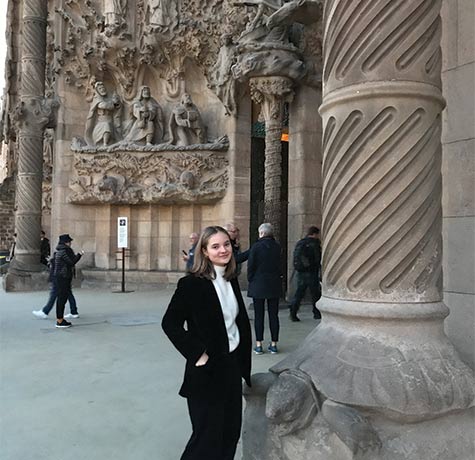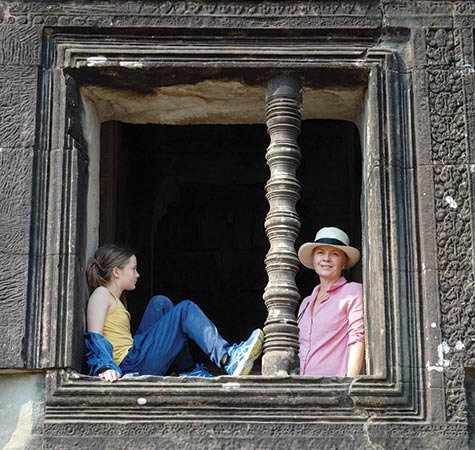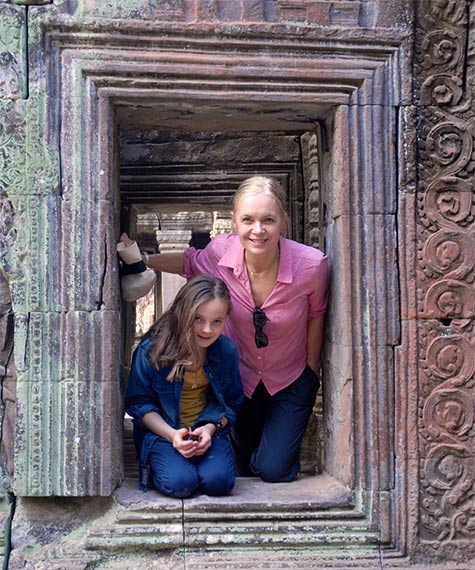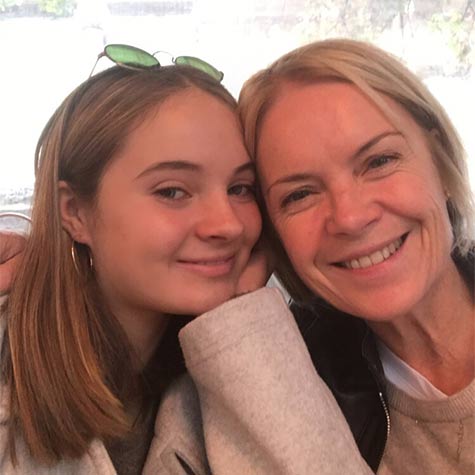Showing our children the wonders of the planet is the best way to inspire them to care for it, says Mariella Frostrup
On a recent weekend in Barcelona, my teenage daughter’s incessant bombast was silenced, turned to a grudging wave of awe as she came face to face with the genius of Antoni Gaudí’s Sagrada Família.
Gaudí, the visionary architect, was working a century ago, yet his home city hardly counts as an extinct culture – in fact, it seems barely to have changed since the 19th century, judging by the bevies of old men smoking and arguing in the city’s verbosity-fuelled cafés.
Soho House, on the waterfront, felt like a welcome return to the familiar, when gorging on tapas and immersing ourselves in Picasso began to feel too richly, exhaustingly Spanish. With the addition of Marmite on toast as a late-night room-service supper, the sense of floating on our own tiny island, minutes’ walk from La Rambla, was complete.

Mariella’s daughter Molly at the Familia Sagrada, Barcelona

Mariella and Molly, then seven, at Angkor Wat
Nowadays, first-world kids grow up in the expectation of regular holidays, and these provide a wonderful opportunity for education and illumination disguised as a week or two of R&R. It’s impossible to wander Angkor Wat, Machu Picchu, the Pyramids or the Parthenon and not be reminded of Shakespeare’s cautionary line: ‘Golden lads and girls all must, as chimney sweepers, come to dust.’
Recent reports about the welfare of the planet aren’t good. Global warming needs to be urgently addressed and, as the Earth hots up, so too does the race to extinction. The WWF recently calculated that we’ve wiped out 60 per cent of the world’s creatures since the 1970s. Our tenure as a species is starting to make us look like the worst of caretakers. It seems that having the means to travel and see the wonders of our globe hasn’t yet been enough of an inspiration to make us look after it better.
For our children, the opportunity to see the world is something they take for granted. I don’t want them to grow up haunted by their own insignificance, but encouraging a new generation of Masters of the Universe is an equally bad idea, based on the destruction we’ve so thoughtlessly wreaked already. It may be hard to coax them off Snapchat long enough to get animated about a future they can’t imagine, but desperate times call for desperate measures, and introducing our children to the evidence of ancient civilisations and history does occasionally seem to have the desired sobering effect. The Christmas market in Kraków, with a quick detour to Auschwitz, is my kind of mini-break.
A few years ago at Angkor Wat, the dazzling spread of temples abandoned by the once great Khmer kings brought my six-year-old boy briefly to silence. ‘What happened to them, Mum?’ he asked in a whisper, incredulous that something as epic and vast could have once been as busy as Oxford Street on a Friday night (and not with tourists).
‘They stopped being the ones in charge,’ was the simplest, kindest answer I could rustle up.


Putting our nanosecond on the planet as a species into perspective – let alone confronting all the great civilisations that have been and gone – could inspire a sense of low self-worth in anyone but Donald Trump. I’m not saying we need to take our children down a peg or two, but disabusing them of the notion that what we have is what will always be seems a valuable lesson in these unstable times.
As the news gets ever gloomier, it’s not just a pleasant add-on, but an imperative of our holidays that we use them to educate as well as entertain our offspring. There are plenty of people who would argue that we should travel less, but I’m definitely not one of them. Instead, we need to holiday responsibly and make it matter more. In fact, it seems another of the many duties of parenting to focus young eyes on the wonders they’ve inherited, and the duty they have to cherish and protect them.